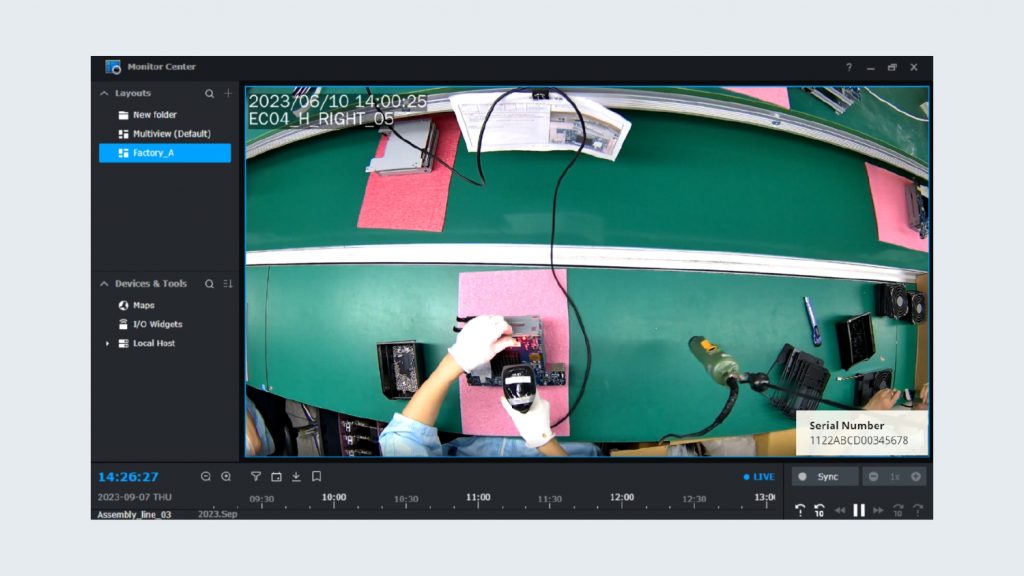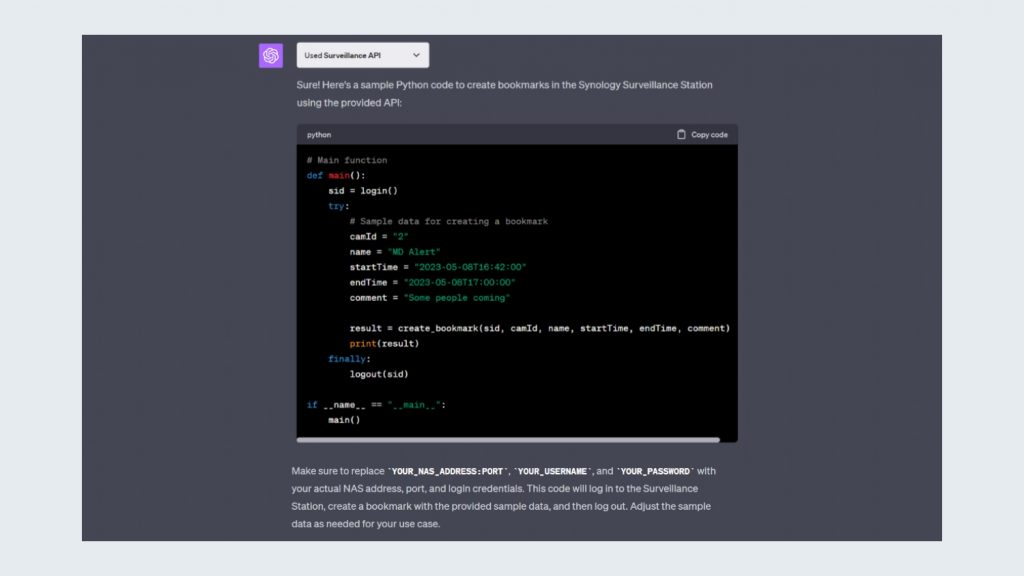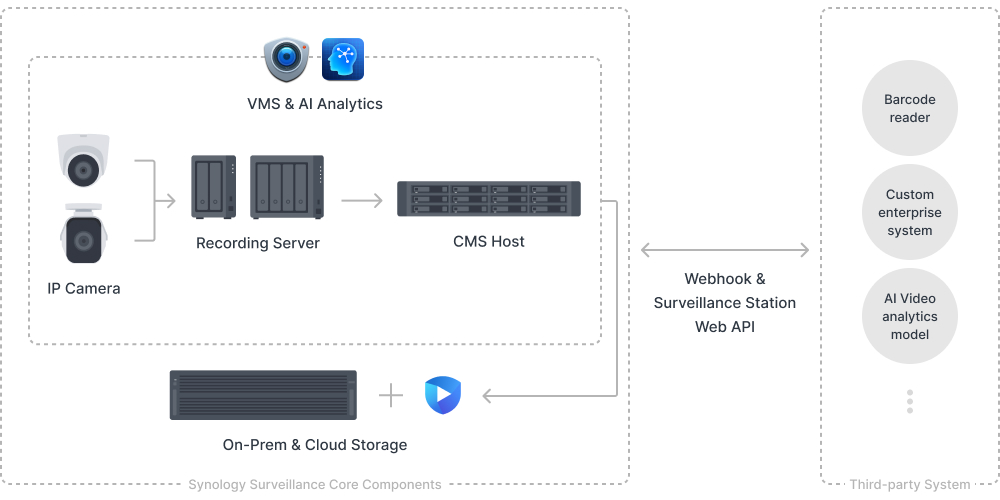Inspired by the trend towards digital transformation, industry leaders are actively contemplating how to effectively utilize technology to enhance organizational productivity. Surveillance systems, in particular, have been widely adopted by businesses to transition from traditional, passive security roles to ones that actively boost productivity. This is due to their ability to instantly identify on-site events and comprehensively record work activity.
To leverage surveillance systems in augmenting business productivity and efficiency, the integration between different systems becomes crucial. For example, in a real-world application of digital transformation in manufacturing, integrating the surveillance system with manufacturing execution systems can be beneficial. Before assembling a product, each operator on the production line can first scan a barcode on the semi-finished product. This barcode information then gets displayed on the monitoring screen and logged in the video database. If any quality issues arise after the product is completed, the relevant video can be swiftly located by querying the barcode, facilitating a review of the workflow to improve product quality.
However, such integration is not straightforward. Since each company uses different key productivity systems, the generic solutions provided by monitoring vendors often fail to adapt to different corporate environments, limiting the added value they bring. Hence, many current projects opt for a tailored approach, starting from scratch to meet the specific needs of individual clients.
This customization approach inevitably reflects higher time and labor costs in project quotes, deterring enterprises from making substantial investments and consequently slowing down the pace of digital transformation.

New API and Webhook Generate Code in 10 Seconds
To facilitate easier integration of surveillance systems with various key productivity systems, Synology released a new version of its Surveillance Station API and webhook in August this year. This significantly accelerates the process of third-party system integration, enabling both clients and system integrators to effortlessly connect Surveillance Station with core productivity systems, swiftly integrate and implement solutions, thereby accelerating digital transformation.
For users, the most significant change in this revision is the simplicity, convenience, and speed. We have expended considerable effort in simplifying the process, providing an intuitive API generation documentation system for clients. Users simply need to select the desired usage scenario, like embedding real-time video into other systems, input parameters such as time, camera ID, and display method, and then generate complete API code with a single click in less than 10 seconds, including the option to test the code directly.
We also offer a ChatGPT plugin. Users can input the needed API type or specify a programming language, and the system will generate the corresponding response, including API coding in languages like Python, Golang, and others.
The webhook feature has also been significantly upgraded. Not only can it transmit events like Synology Camera detection and DVA image analysis results, including details and snapshots to third-party platforms, but it also supports receiving data from external systems. This enables users to easily create a centralized security monitoring platform with Surveillance Station, managing a variety of systems, detection, and alarm functions from a single entry point.

Surveillance Station as a Versatile, Multi-Scenario Integration Platform
With the newer, simpler, more functional, and compatible API and webhook, Synology’s Surveillance Station can now serve as a robust monitoring integration platform, significantly increasing end user satisfaction.
Considering the most common monitoring system integration needs, whether it’s embedding camera images collected by the surveillance system into other key productivity system interfaces, streaming recorded footage to other systems for analysis, or transmitting data and analysis results from other systems back to the Surveillance Station display, all these can be fulfilled using the new API and webhook integration tools of Surveillance Station.
Usage scenarios include:
- Embedding Surveillance Station video into web pages via WebSocket.
- Sending license plate recognition results to access control systems, allowing automatic door operation.
- Transmitting face recognition results to attendance systems for automatic clock-ins.
- Displaying third-party AI analysis results in the real-time video of Surveillance Station.
For example, we have received monitoring requirements related to the construction industry from various continents, needing to detect whether all construction workers are wearing safety helmets as required. Although Synology’s monitoring system has always supported AI analysis, due to the varying safety helmet models across different countries, regions, and even sites, we haven’t established a universal helmet detection model considering accuracy issues. Previously, it would have been challenging to completely meet the site requirements. However, with the new API, Surveillance Station can now connect with locally customized AI model databases for the construction industry, achieving rapid and more efficient customized requirements for different sites.
Learn more | Explore Surveillance Station WebAPI
Synology’s One-Stop Solution: From Monitoring Systems to Hybrid Cloud
This API upgrade marks an important milestone in Synology’s development in the monitoring market. Observing the global surveillance and security market, it’s largely divided into two camps: traditional camera manufacturers and VMS (Video Management Software) providers. Camera manufacturers, while covering over half of most project budgets, often provide limited NVR/VMS functionality, with insufficient system and storage scalability, making it hard to handle larger projects.
On the other hand, VMS providers offer complete software functions and strive to integrate systems like access control but generally lack basic infrastructure support and compatibility, particularly with on-premise architectures. Additionally, their subscription-based business model is not particularly budget friendly for large-scale, long-term enterprise deployments.

Synology’s development strategy in the surveillance market is to complement the strengths of other manufacturers while leveraging its unique advantages in proprietary NAS and public cloud. It competes through comprehensive large-scale CMS features, compatibility with third-party devices, and highly scalable system architecture and storage. At the same time, Synology aims to expand its surveillance market share with a straightforward, one-stop cost structure.
In terms of product roadmap, functionalities such as cameras, surveillance systems, servers, storage devices, AI analytics, and access control, which are in demand in over 80% of scenarios, are positioned as “core standard products.” Synology plans to completely master these core technologies by 2025. For other non-core standard products, partners can easily integrate using tools like APIs, continually broadening the range of applications that Surveillance Station can accommodate. Furthermore, Synology will utilize the strengths of its own NAS and public cloud C2, providing businesses with the flexibility to choose the most suitable hybrid cloud architecture for running surveillance services. This strategy aims to create the most comprehensive one-stop surveillance system solution on the market.
